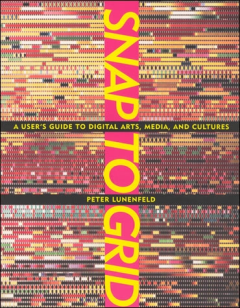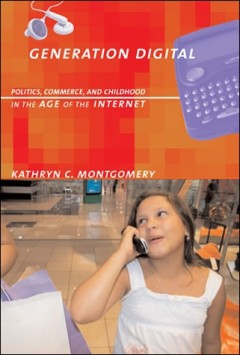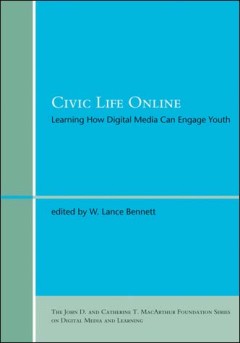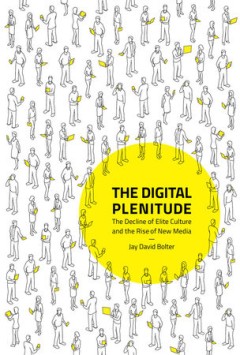Filter by

Postdigital Participation in Education
This open access book examines the interrelations and correlations of the postdigital condition and its relationship to education, with a particular focus on participation. Contributions reflect on how educational institutions are affected by the recent transformations of media technologies and practices, and how at the same time institutions such as schools and universities are supposed to ena…
- Edition
- -
- ISBN/ISSN
- 978-3-031-38051-8
- Collation
- XXV, 250
- Series Title
- -
- Call Number
- -

The Media Systems in Europe
Stylianos Papathanassopoulos is a Professor of Media Organization and Policy at the Department of Communication and Media Studies, National and Kapodistrian University of Athens (NKUA), Greece. Between 2007 and 2011 he was the head of the faculty and member of the Board of the Hellenic Audiovisual Institute. Further, he is a Visiting Professor at City University, London, United Kingdom. Previou…
- Edition
- -
- ISBN/ISSN
- 978-3-031-32799-5
- Collation
- -
- Series Title
- -
- Call Number
- -

Snap to Grid ; A User's Guide to Digital Arts, Media, and Cultures
"Dalam Snap to Grid, panduan istimewa untuk era telematika interaktif, Peter Lunenfeld memetakan lintasan yang telah ditelusuri oleh teknologi digital pada imajinasi budaya kita. Evaluasinya terhadap media baru mencakup diskusi yang penuh semangat - yang diinformasikan oleh wacana teknologi, estetika, dan teori budaya - tentang seniman, desainer, dan pembuat digital yang paling penting. "Snap t…
- Edition
- -
- ISBN/ISSN
- 9780262278652
- Collation
- 1 online resource (xxv, 226 pages)
- Series Title
- Multimedia systems
- Call Number
- 006.6 LUN s

Generation digital : politics, commerce, and childhood in the age of the inte…
The role that children and youth play in the emerging digital media culture-as consumers targeted by marketing campaigns, as creators of their own digital culture, and as political participants.OCLC-licensed vendor bibliographic record.
- Edition
- -
- ISBN/ISSN
- 9780262280129
- Collation
- 1 online resource (xv, 347 pages)
- Series Title
- -
- Call Number
- 302 MON g

Getting under the skin : the body and media theory
"The body as an object of critical study dominates disciplines across the humanities to such an extent that a new discipline has emerged: body criticism. In Getting Under the Skin, Bernadette Wegenstein traces contemporary body discourse in philosophy and cultural studies to its roots in twentieth-century thought - showing how psychoanalysis, phenomenology, cognitive science, and feminist theor…
- Edition
- -
- ISBN/ISSN
- 9780262285889
- Collation
- 1 online resource (xxii, 211 pages) : illustrations
- Series Title
- -
- Call Number
- 302 WEG g

Re-collection: Art, new media, and social memory
The first book on the philosophy and aesthetics of digital preservation examines the challenge posed by new media to our long-term social memory.OCLC-licensed vendor bibliographic record.
- Edition
- -
- ISBN/ISSN
- 9780262324083
- Collation
- 1 online resource (xii, 297 pages) :illustrations.
- Series Title
- -
- Call Number
- -

Civic Life Online: Learning How Digital Media Can Engage Youth
The relationship of participation in online communities to civic and political engagement. Young people today have grown up living substantial portions of their lives online, seeking entertainment, social relationships, and a place to express themselves. It is clear that participation in online communities is important for many young people, but less clear how this translates into civic or p…
- Edition
- -
- ISBN/ISSN
- 9780262303125
- Collation
- -
- Series Title
- -
- Call Number
- -

Identity Games: Globalization and the Transformation of Media Cultures in the…
This work is an examination of the unique, hybrid media practices generated by Eastern Europe's accelerated transition from late communism to late capitalism.OCLC-licensed vendor bibliographic record.
- Edition
- -
- ISBN/ISSN
- 9780262255127
- Collation
- 1 online resource (x, 257 pages) :illustrations
- Series Title
- -
- Call Number
- -

The digital plenitude :the decline of elite culture and the rise of new media
How the creative abundance of today's media culture was made possible by the decline of elitism in the arts and the rise of digital media. Media culture today encompasses a universe of forms--websites, video games, blogs, books, films, television and radio programs, magazines, and more--and a multitude of practices that include making, remixing, sharing, and critiquing. This multiplicity is so …
- Edition
- -
- ISBN/ISSN
- 9780262352505
- Collation
- 1 online resource (232 pages).
- Series Title
- -
- Call Number
- -

Evil media
A philosophical manual of media power for the network age."Evil Media develops a philosophy of media power that extends the concept of media beyond its tried and trusted use in the games of meaning, symbolism, and truth. It addresses the gray zones in which media exist as corporate work systems, algorithms and data structures, twenty-first century self-improvement manuals, and pharmaceutical te…
- Edition
- -
- ISBN/ISSN
- 9780262305327
- Collation
- 1 online resource (viii, 235 pages)
- Series Title
- -
- Call Number
- -
 Computer Science, Information & General Works
Computer Science, Information & General Works  Philosophy & Psychology
Philosophy & Psychology  Religion
Religion  Social Sciences
Social Sciences  Language
Language  Pure Science
Pure Science  Applied Sciences
Applied Sciences  Art & Recreation
Art & Recreation  Literature
Literature  History & Geography
History & Geography